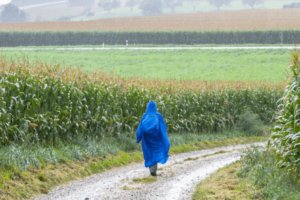Dehydrating fruit is no new concept given the process has been used for centuries. Sun dried tomatoes are a prime example of the deliciousness of dried fruit revered all over the world. Today, you can source dried fruit in many high street stores and supermarkets, but, as we now have the ability to use dehydrators or ovens to speed up the tedious process, it makes sense to make your own.
Why You Should Dehydrate Your Fruit
Firstly, it is a much cheaper alternative to purchasing the overpriced dried fruit in stores, and secondly, you have the satisfaction of creating your own delicious treats.
Fruit is not only a healthy and accessible snack, but it provides a natural source of energy which can be used to boost your flailing energy levels during a long and challenging day of hiking. However, as we are all aware, fruit is highly perishable which is not ideal, particularly if you intend on embarking on an extensive walking trip through the wilderness for a few days.
We have all experienced emptying out our backpack in the evening and pulling out a browning smelly banana that you only packed that morning. By comparison, dehydrated fruit can last for months. Whilst a dried banana may not quite have the nutritional value of a fresh one, it still makes for a compatible, healthy and tasty snack. What you need to make your own;
- A dehydrator, or alternatively you can use your oven if preferred
- Your chosen selection of in season fruit, for example, peaches, strawberries, apples, cranberries…
- A mandoline slicer to cut the fruit
Steps to take in making your own Dried Fruit
- Find out and purchase your chosen fruit when in their peak season as this is the best time to dry them.
- Preheat your dehydrator to the optimal temperature of between 125 – 135 Fahrenheit. Do not attempt to dry your fruit in a higher setting as this will result in the wrong consistency with the fruit hardening on the outer layer. As previously mentioned, if you do not own a dehydrator, you can use your oven. Preheat the oven to the same temperature leaving the oven door open slightly to ensure striking the required balance between heat and humidity.
- Wash and rinse fruit thoroughly.
- Use the mandoline slicer to thinly cut the fruit. The thinner the slice, the less time required to dry out. Ideally, you want the slices to be of equal thickness to ensure that they all take the same time to dry.
- Hold the slices of fruit under a cold running tap to rid them of any excess residue.
- Spray apples, strawberries and bananas with lemon. This will prevent them from browning and growing mould.
- Place all of the fruit on a drying rack and ensure that the slices do not overlap with one another as this can increase the drying time.
- Put the evenly spaced out fruit into the dehydrator. The duration for which the fruit is to stay in the dehydrator, or oven, largely depends on the fruit that you are drying. As a general guide, apples take 7- 15 hours, bananas 6 – 10 hours and strawberries 7 to 15 hours.
- Remove the fruit from the appliance once the fruit has dried to your preference.
- Leave the fruit to cool, et voila!
Tips
- If using a dehydrator, check the quantity of fruit that it can hold at any one time. If you overfill the appliance, it will massively increase the required drying time
- For best results, it is recommended that you use a contemporary dehydrator. Although dehydrators are a relatively recent invention, some of the older appliances can vary in quality
- While drying the fruit on a lower temperature will naturally take longer, it will help to preserve their nutrition value.
- For enhanced flavour, it is recommended to use fully ripe, but not bruised fruit.







